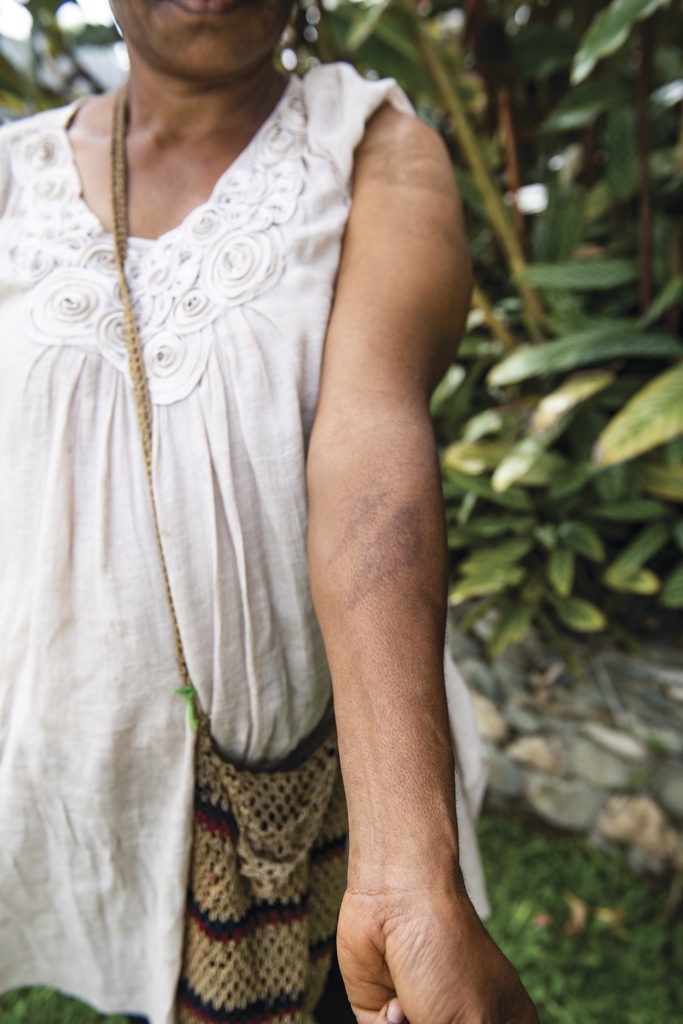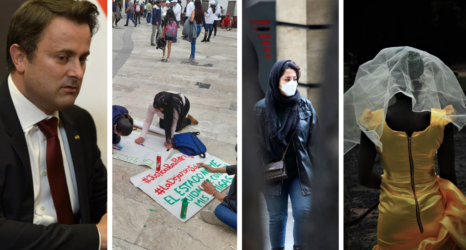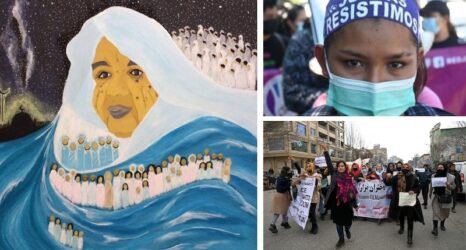Paul Petrus speaks softly about the part he played in the rescue of an accused witch.
Anna (not her real name), a young woman in her mid-twenties, was being tortured by villagers outside the city of Mount Hagen, in the Western Highlands province of central Papua New Guinea (PNG). After a 2015 outbreak of tribal violence in the neighboring province of Enga, Anna had fled approximately 80 miles to escape the conflict. But some members of the opposing tribe recognized Anna at the Mount Hagen marketplace.
“[They] kidnapped her … took her to an isolated place and raped her,” says Petrus, who is on a team of more than 100 human rights defenders from Mount Hagen that rescues people accused of witchcraft.

The attack took place on a Friday night. Anna managed to escape her attackers around 3 a.m. In shock, with her clothing shredded, she staggered through the dark and stumbled into a village. Ordinarily everyone would have been asleep, but some villagers had just interred a family member in the community cemetery and were keeping vigil over the burial site, watching for malignant spirits that might snatch the body away, Petrus says.
To the family holding vigil, Anna’s brutalized form, emerging like an apparition out of the dark, was precisely what their imaginations feared. Some of the villagers grabbed her. They “started making a big fire and started burning her private parts by heating up machetes,” Petrus says. At 4 a.m., he received an urgent phone call for help from the village pastor. Petrus ran to the police station and arrived at the scene shortly after 6:30 a.m. in a cruiser driven by a woman officer. Together, they bundled the victim, now reeking of burned flesh, into the car and drove her to Mount Hagen General Hospital.
Part of Petrus’ rescue work involves training the public in how to react when an individual is in imminent danger from witch hunters; the pastor was one of those trained by Petrus. More people should take part, Petrus says, because the “issues of sorcery [are] starting to escalate.”
Animism and ancestor worship are part of the belief system of many Papua New Guineans, especially those in remote inland areas. Sanguma is the word used to describe witchcraft—possession of an individual by a spirit, which is reputed to take the form of an animal such as a frog. The terms sorcery and witchcraft are used interchangeably, although the former usually refers to potions and spells rather than a personal power that can be used for good or ill.
Only in the past few generations have many Papua New Guineans been exposed to belief systems other than their own, since first contact with tribes in the interior occurred as late as the 1930s. The country’s diversity is remarkable: There are upward of 850 languages, each dialect representing a unique cultural group in this small, developing nation of 8.6 million people. Moreover, the isolation of many tribal communities, living in a subsistence economy in dense mountain rainforests, has further insulated them from outside influence. As a result, the government has only just recently begun to deal with the problem of witch burnings.
In 2013, 20-year-old Kepari Leniata was accused of witchcraft following the death of a neighbor’s son from ill health. She was burned alive on a pyre built of rubber tires in Mount Hagen, in front of a crowd of people. Her death triggered the repeal of the Sorcery Act, which made murder legal if the victim practiced sorcery, and later the creation of the Sorcery National Action Plan. Inadequately funded, the program was replaced by the Sorcery Accusation Related Violence National Action Plan, a group of church leaders and human rights advocates who promote a holistic approach to sanguma accusations, including helping victims, stopping accusations and using the law to punish those who perpetrate violence.
A decade or so ago, sanguma had been isolated to a few provinces like Chimbu, southeast of Mount Hagen. But then came dramatic societal shifts: dislocation and family breakdown due to unbridled naturalresource extraction (logging, palm nut plantations and mining). These—plus increased HIV/AIDS rates, a rise in alcohol and drug abuse and afflictions like diabetes and heart disease—frayed the social fabric.
Consequently, sanguma beliefs spread.
A study titled “Ten Preliminary Findings Concerning Sorcery Accusation-Related Violence in Papua New Guinea,” released this year by Australia National University’s Development Policy Centre, indicated that since 2016, there have been 357 incidents of sorcery accusations in Enga and Bougainville provinces alone, as well as some in the capital, Port Moresby. Of these 357 incidents, 117 led to violence against 185 victims.
Human Rights Watch (HRW) corroborates the reports of violence, stating in 2016 that “PNG is one of the most dangerous places in the world to be a woman, with the majority of women experiencing rape or assault in their lifetime.” In 2018, HRW further reported that sorcery accusation-related violence is “unabated, with women and girls the primary targets.”
Yet another challenge to stopping anti-sanguma superstition is the country’s low literacy rate—at 63 percent in 2015, according to the World Data Atlas. People also lack access to written materials that might help them question faith systems, which makes street theater, performed in public spaces such as market areas, the most effective means of communication. That’s where the Seeds Performing Arts Theatre Group, based in Lae, about an hour’s flight from Mount Hagen, comes in. Launched in 1997 to help unemployed youths, Seeds began challenging anti-witchcraft violence after Leniata’s death, staging productions that dramatize such simple messages as “women, not witches.” One of their goals is to raise awareness that women and girls have human rights and must be treated with dignity.
But Seeds, conflict-resolution groups and rescue teams aren’t alone in trying to help accused victims. The PNG Roman Catholic Church has also become an active force fighting anti-sanguma violence. There’s a little-discussed irony here. In PNG, the only way to prove someone is a witch is to convince the community or force a confession, hence the torture. It’s awfully reminiscent of church practices in Europe during three separate Inquisitions beginning in the 1100s and ending as late as 1826.

This article originally appeared in the Fall 2019 issue of Ms.
Become a member today to read more reporting like this in print and through our app.





